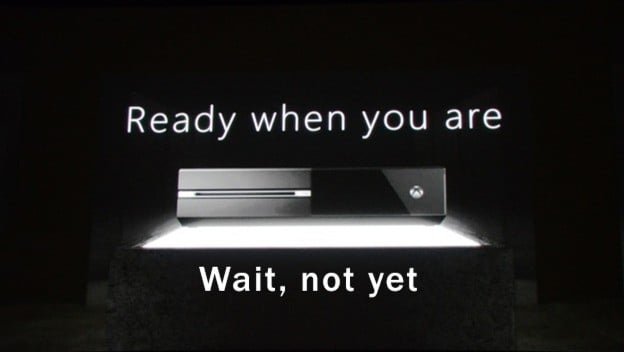Although the initial announcement of pay-to-play multiplayer for the PlayStation 4 left a foul taste in the mouths of many, Sony’s repeated assurance that revenue from the inevitable rise in subscriptions will be put towards improving and stabilizing PlayStation Network has dampened the resentment considerably. As expected, Sony explained that the shift to a paid online model was sparked by the need to stay competitive as a network, and the addition of a multiplayer fee is an effective way to raise the necessary funds. More surprising, however, is how dramatically the change may benefit the company.
A new report from Piers Harding-Rolls of analyst firm IHS Electronics and Media (via VG24/7 ) further supports the new direction of PlayStation Plus, stating, “IHS forecasts that Sony’s change in strategy will help generate $1.2b in annual consumer spending on PlayStation Plus Subscriptions by 2017 and will give Sony access to an essential and substantial revenue stream, one which Microsoft has enjoyed since the launch of Xbox Live way back in 2002.” This amounts to an approximate 900% increase, as the firm claims that PS+ subscriptions have only brought in $140 million to date .
The obvious implication of such a monumental figure is that Sony will indeed have the budget to make any and all changes to PSN. However, an arguably more valuable factor comes to light when the alleged $1.2 billion is placed alongside Microsoft’s Xbox Live service. As Harding-Rolls detailed in IHS’ report, “Microsoft Xbox Live users, who only have access to online multiplayer gaming through Gold accounts, spent nine times as much—$1.25 billion—on service subscriptions in 2012.”
“And since the launch of Xbox Live in 2002,” Harding-Rolls continued, “total spending on Xbox Live subscriptions has reached a very substantial $4.7 billion. Over the past decade, the revenue derived from this spending has enabled Microsoft to invest in and build a world-class online platform and digital content service, allowing the company to stay ahead of its console competitors.” These statistics not only label Sony’s projected growth as an equalizer to its biggest online competitor, but also affirm the notion of digital growth in the next console generation.
Throughout its current 11-year lifespan, Xbox Live has generated $4.7 billion, with $1.2 billion of that coming from 2012 alone. Clearly, the service has seen a sharp increase in activity in recent years. The same pattern can be applied to IHS’ next-gen predictions: Annual revenue of $1.2 billion would lead PlayStation Plus to overtake Xbox Live’s Xbox 360 record in just four years after its proposed peak in 2017. This aligns with Sony’s philosophy on consoles—which is exemplified by the seven-year-and-counting lifespan of the PlayStation 3— and is a reasonable estimation for the PS4.
Although the same optimistic predictions can be granted to the Xbox One—which has been confirmed to be adhering to the same service policy as the Xbox 360—Microsoft has a unique factor working against them in the hypothetical. The recent announcement that the Xbox One will not release in over one-third of its original market of 21 countries until 2014 is an enormous hurdle for the system, and one that creates an equally enormous opportunity for Sony’s next-gen system.
As Microsoft’s official announcement shows, the countries in question are Belgium, Denmark, Finland, Netherlands, Norway, Russia, Sweden, and Switzerland. This knocks the Xbox One’s 2013 launch demographic down to 13 countries from its original 21, but it still includes the bigger players like the United Kingdom, United States, and Canada. Regardless of the reason, be it manufacturing issues or delays incurred through Microsoft’s many displays of gymnastics , the fact remains that eight countries will not see an Xbox One this year. Provided Sony stays true to its original launch schedule (and previous hardware release history), this equates to eight avenues of unbridled console monopoly for the PS4, if only for a few months until the Xbox One does hit, presumably in Q1 2014.
It may not be the enormous head start that the 360 held over the PS3, but this quarter of zero competition is poised to give Sony an irrevocable edge over the Xbox One in the above countries—and in no small part due to PlayStation Plus.
At $50 a year, PlayStation Plus holds a moderate price advantage over Xbox Live. Unfortunately, as the current generation has shown, PSN isn’t the faster or more reliable of the two, which often impeded the PlayStation 3’s growth. This directly resulted from the free-to-play status of PSN, which will be lost on the PS4 in lieu of a paid subscription. In doing so, Sony will remedy—or at least work towards repairing—the most divisive factor between PSN and Xbox live and simultaneously place greater weight behind the many benefits of PS+. And there’s nothing more enticing than the service’s Instant Game Collection.

An earlier report from GameRevolution shows that, in return for the $50 investment, PlayStation Plus subscribers were given 64 free games over the course of a year. Collectively, the value of the games reaches well into the $1000 mark, depending on how their prices are calculated. This is something that you will only see on PlayStation hardware (though the Steam network is a close second in the value Olympics), and it will undoubtedly prove to be a selling point for the PlayStation 4. In this, we can derive a simple question of pragmatism: After spending roughly three months with PlayStation 4 and its PS+ archive—its cheaper subscription fee, enormous Instant Game Collection, rapidly improving network, and day-one giveaways—who’s going to run out and pay $500 more for an Xbox One?
Those eight countries seem a bit more influential now, don’t they? This isn’t about console favoritism or developer fanboy bias; it’s a simple matter of money and timing. In a fair race, the Xbox One and PlayStation 4 are entirely comparable despite the current PR dominance of Sony. But if one contender shows up late? Well, that’s hardly a competition at all.
Of course, this is all speculation. Microsoft has yet to nail down the specifics of the Xbox One’s delay outside of the affected regions, and Sony has remained conveniently silent on its target launch markets. However, the opportunity to gain an early lead in the next-gen race is clearly there, leaving only the question of whether or not Sony can capitalize on it.
